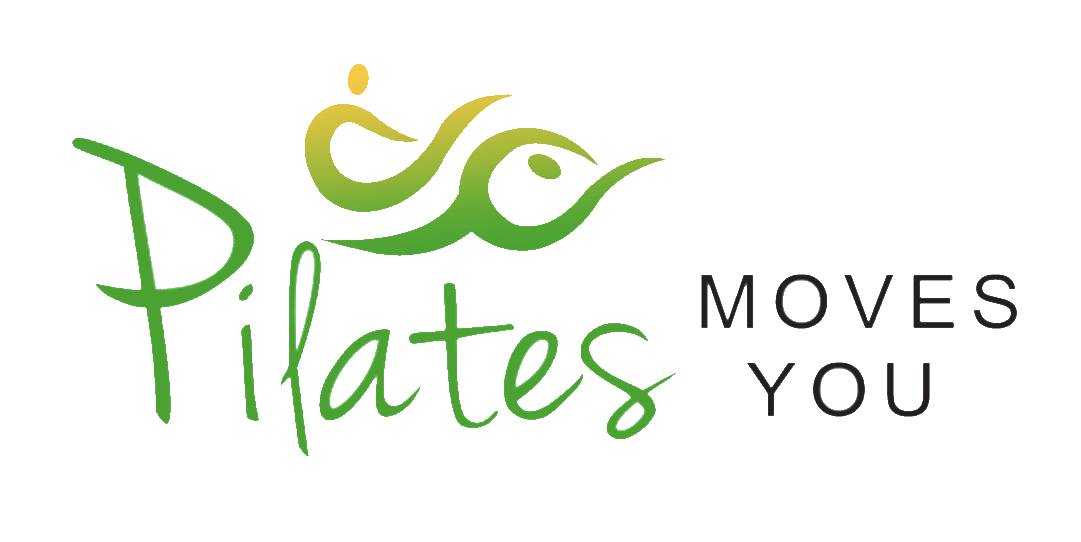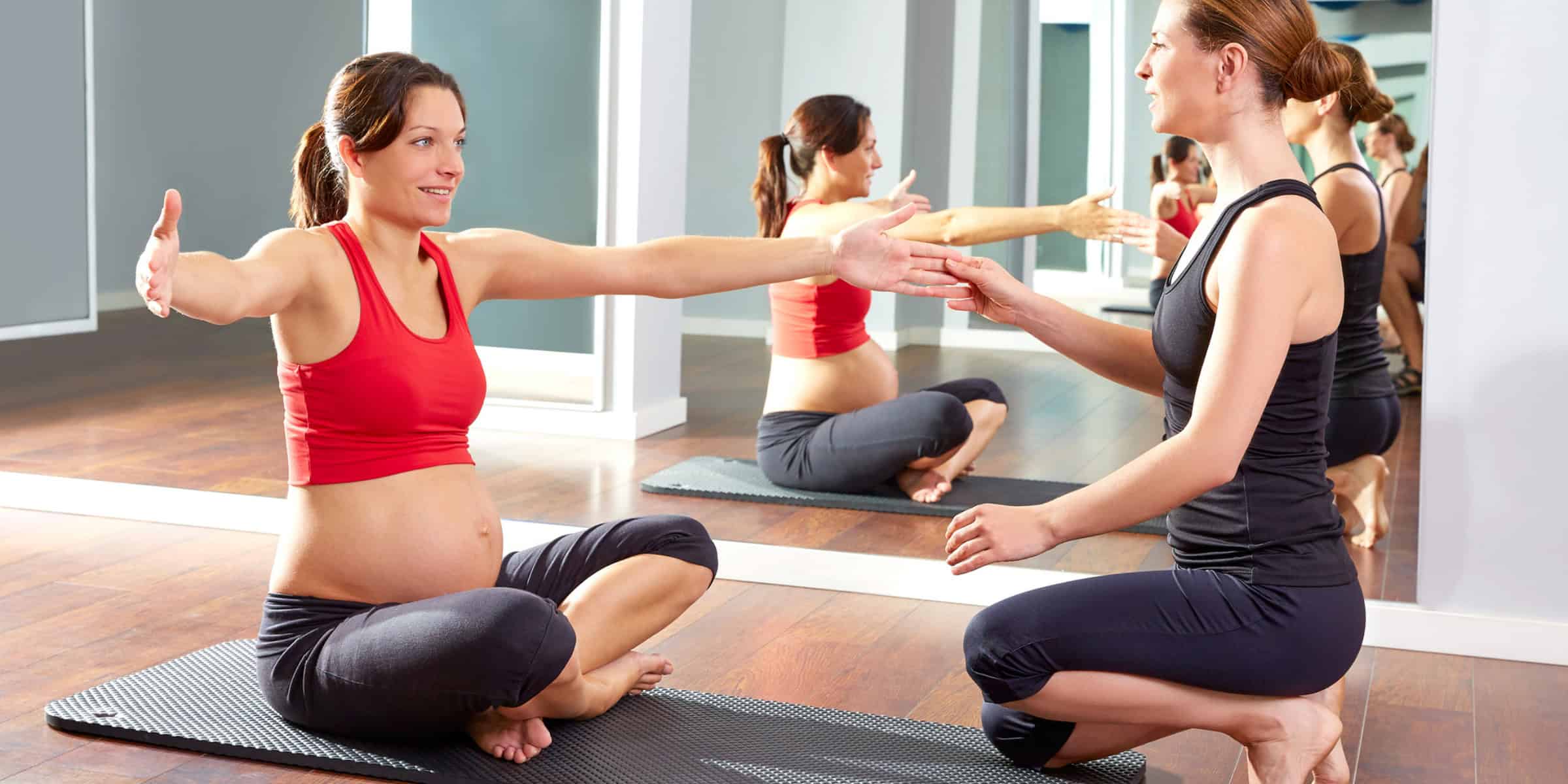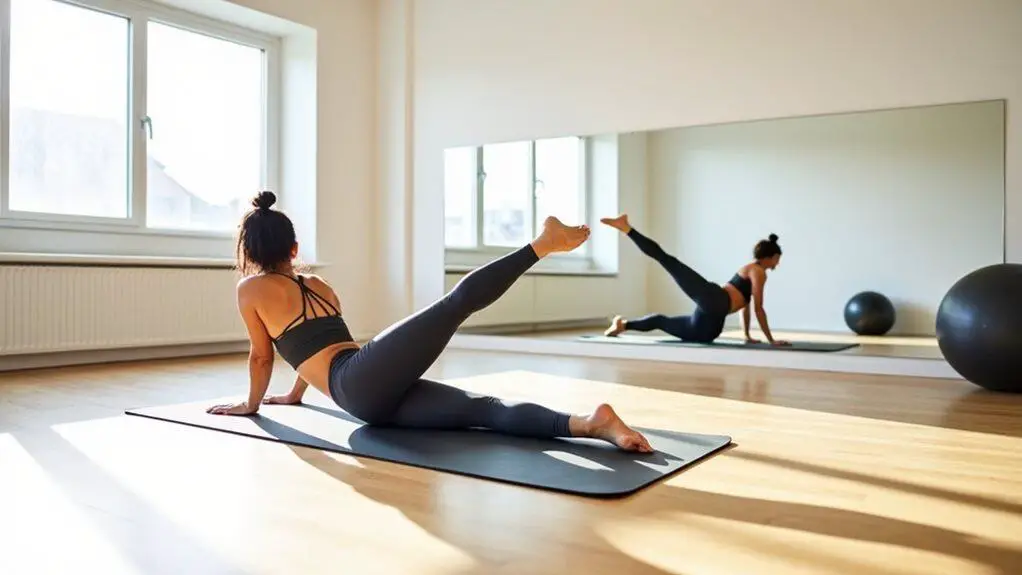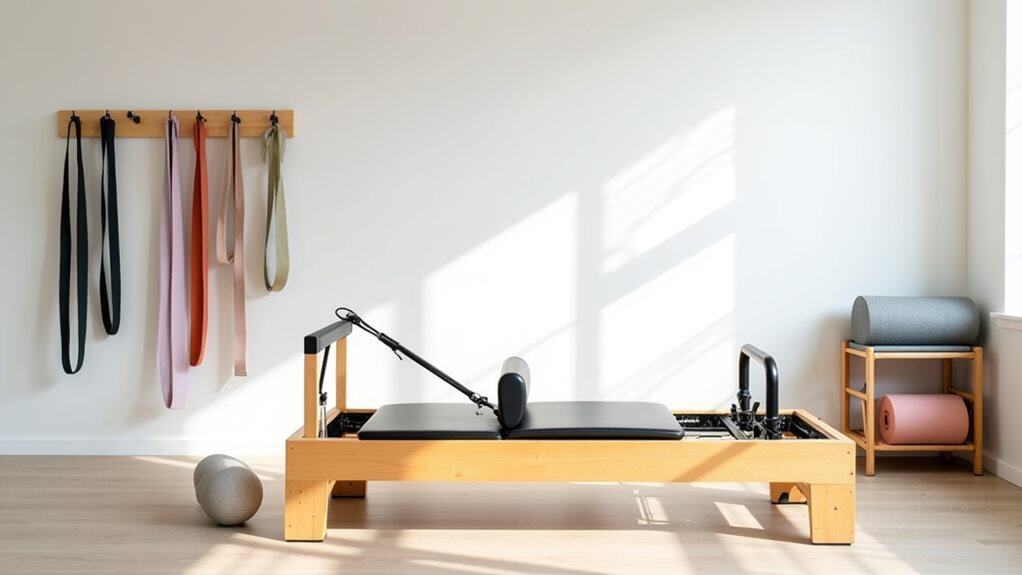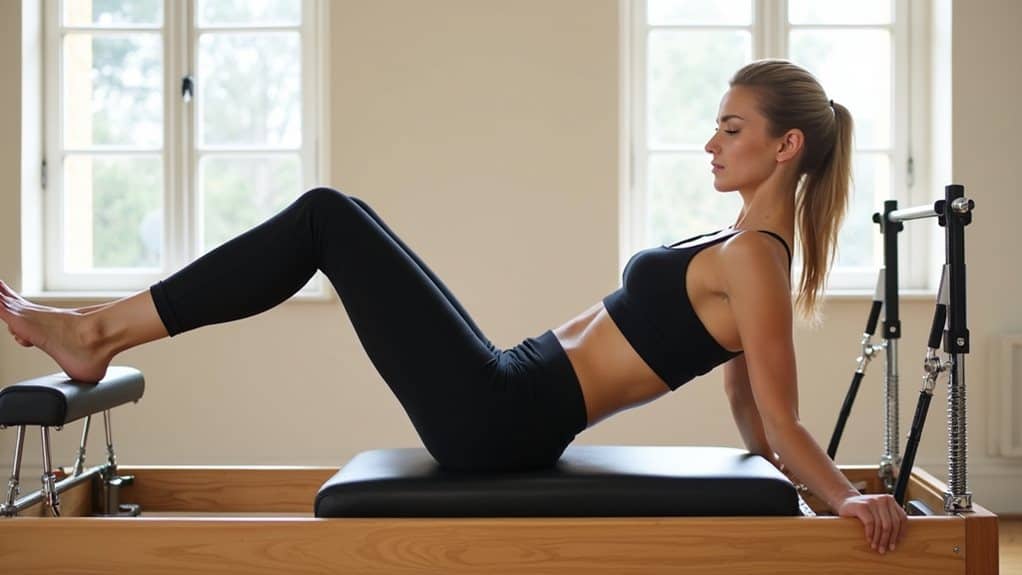Are you a soon-to-be or new mother looking for a way to stay active and healthy while navigating the journey of motherhood? Look no further than Pilates!
This low-impact exercise regimen is perfect for prenatal and postnatal women, offering a range of benefits that can help you feel strong, confident, and empowered throughout this exciting time.
At its core, Pilates focuses on building core strength, improving flexibility, and promoting overall wellness through a series of precise, controlled movements.
Whether you’re in your third trimester or recovering from childbirth, Pilates can be tailored to your needs and abilities, providing a safe and effective way to stay active during this transformative time.
So why not embrace the journey of motherhood with the empowering benefits of Pilates? Let’s explore what this amazing exercise regimen has to offer for prenatal and postnatal women alike.
Introduction to Pilates for Prenatal and Postnatal Women
You’re about to embark on a journey of strength and empowerment as you explore the world of Pilates for prenatal and postnatal women. Pilates is a low-impact exercise routine that focuses on strengthening your core muscles and improving your posture. It’s an excellent way to stay fit and healthy during pregnancy and to bounce back after giving birth.
Pilates benefits prenatal and postnatal fitness in several ways. For expectant mothers, Pilates can help alleviate common pregnancy symptoms such as back pain and fatigue. It can also improve your overall fitness level, making it easier to cope with the physical demands of labor and delivery.
For new mothers, Pilates can help strengthen your abdominal muscles, pelvic floor, and back muscles, which are often weakened during pregnancy and childbirth.
Overall, Pilates is an excellent way to stay fit and healthy during pregnancy and to recover after giving birth. In the next section, we’ll explore some of the specific benefits of Pilates for prenatal women.
Whether you’re a first-time mom or a seasoned pro, Pilates can help you embrace the journey of motherhood by improving your physical strength, mental resilience, and overall well-being.
Benefits of Pilates for Prenatal Women
Let’s talk about the benefits of Pilates for prenatal women.
During pregnancy, our bodies go through significant changes that can affect our posture and balance, causing discomfort and even pain in the lower back. Practicing Pilates can help improve our posture and balance, reducing the risk of injury and discomfort.
Additionally, Pilates can increase our flexibility and strength, which can be beneficial during labor and delivery.
So, if you’re looking for a way to decrease stress and anxiety while improving your physical health during pregnancy, Pilates might be the perfect choice for you.
Improved Posture and Balance
Improve your posture and balance with Pilates. It’ll help you feel more confident and stable as your body changes during pregnancy and postpartum. Proper alignment is key in Pilates, and it helps prenatal and postnatal women maintain their balance and stability.
With improved stability, you’ll be able to move with ease, reduce the risk of falls, and feel more secure in your movements.
In addition to proper alignment, Pilates enhances body awareness and coordination. Women who practice Pilates during pregnancy and postpartum become more aware of their bodies and how they move. This helps them adjust to the changes in their bodies and coordinate movements more effectively.
With better coordination, you’ll be able to perform daily tasks with ease, which can be especially helpful when taking care of a newborn.
By incorporating pilates into your routine, you’ll be setting yourself up for success in your journey as a mother. Plus, it’ll help reduce back pain, which we’ll discuss in the next section.
Reduced Back Pain
Reducing back pain is a common concern for many expecting mothers, but incorporating pilates into your fitness routine can help alleviate discomfort and promote overall well-being. Pilates exercises focus on strengthening the muscles in the abdomen, back, and pelvic floor, which can help support the spine and improve posture. This can help alleviate the pressure on the lower back and reduce the risk of developing back pain.
Prenatal Pilates is also designed with comfort in mind. As your body changes during pregnancy, certain exercises may become uncomfortable or even painful. However, Pilates can be modified to suit your individual needs, making it a safe and effective way to reduce back pain throughout your pregnancy. By incorporating Pilates into your fitness routine, you can enjoy the benefits of reduced back pain, improved posture, and overall physical and mental well-being. As a result, you can feel empowered and confident as you navigate the journey of motherhood. In the next section, we will explore how Pilates can help increase flexibility and strength.
Increased Flexibility and Strength
Incorporating Pilates into your fitness routine during pregnancy can enhance your body’s flexibility and strengthen important muscle groups. Here are some benefits for flexibility and mobility and advantages for muscle strength and tone:
-
Pilates exercises are low-impact, which means they’re gentle on your joints. This is especially important during pregnancy when your body experiences a lot of changes that can put stress on your joints and muscles. Pilates can help you maintain your range of motion and prevent stiffness and pain.
-
Pilates focuses on the core muscles, including the abdominal muscles, back muscles, and pelvic floor muscles. Strengthening these muscles can help you maintain good posture and balance, which is important during pregnancy and postpartum. Strong core muscles can also help you avoid back pain and other discomforts associated with pregnancy.
-
Pilates exercises are designed to improve your overall strength and tone. This can help you maintain your energy levels and feel more confident and empowered during pregnancy and beyond. By incorporating Pilates into your fitness routine, you can experience the many benefits of this gentle yet effective form of exercise.
As you continue to embrace the journey of motherhood, you may also experience increased stress and anxiety. In the next section, we’ll explore how Pilates can help you reduce these feelings and promote a sense of calm and relaxation.
Decreased Stress and Anxiety
As we’ve seen, practicing Pilates during pregnancy can greatly increase flexibility and strength. But that’s not all – it can also be a great way to decrease stress and anxiety during this time of significant change.
As a prenatal Pilates instructor, I’ve seen first-hand the benefits that Pilates can provide for mothers-to-be. There are various techniques for relaxation that can be incorporated into a Pilates routine, such as deep breathing, visualization, and meditation. These techniques help to activate the parasympathetic nervous system, which promotes a state of calmness and relaxation.
Additionally, Pilates emphasizes the mind-body connection, which can help pregnant women become more aware of their bodies and decrease feelings of anxiety. By practising Pilates, women can not only prepare their bodies for birth, but also reduce stress and anxiety levels during this exciting yet challenging time.
As we move on to discussing the benefits of Pilates for postnatal women, it’s important to note that the techniques for relaxation and mind-body connection that we just discussed are just as important post-birth as they are during pregnancy. In fact, Pilates can be an excellent way for new mothers to focus on their physical and mental health while adjusting to life with a new baby.
Benefits of Pilates for Postnatal Women
As postnatal women, we’re often faced with the challenge of rebuilding our strength and stamina after giving birth. This is where Pilates can be a game changer!
By focusing on controlled movements and breath work, Pilates helps us reconnect with our bodies and rebuild strength from the inside out.
Additionally, Pilates can help improve pelvic floor function, which is crucial for postpartum recovery and can prevent future issues.
Lastly, Pilates can help us regain abdominal strength, which can be especially important after pregnancy and childbirth.
So let’s embrace the power of Pilates and take the first step towards feeling strong and confident in our postpartum bodies!
Rebuilding Strength and Stamina
You’ll be amazed at how quickly you can rebuild your strength and stamina with Pilates during your prenatal and postnatal journey.
As a new mother, your body goes through a lot of changes, and it can be difficult to find the time and energy to exercise. Pilates offers a low-impact workout that focuses on building core strength and flexibility, which can help you regain your strength and energy levels.
Along with proper nutrition tips and rest and recovery, incorporating Pilates into your routine can help you achieve your postnatal fitness goals. Through Pilates, you’ll learn how to engage your muscles properly, which can help you avoid injury and build a stronger foundation for your body.
The exercises are gentle and can be modified to suit your needs, whether you’re just starting out or have been practising for years. With consistent practice, you’ll notice an improvement in your stamina, posture, and overall sense of well-being.
So, if you’re ready to take the first step towards rebuilding your strength and stamina, give Pilates a try! In the next section, we’ll discuss how Pilates can help improve pelvic floor function.
Improving Pelvic Floor Function
Improving your pelvic floor function is crucial for a healthy and comfortable pregnancy, and Pilates can help. It strengthens the muscles in your pelvic region responsible for supporting the bladder, uterus, and rectum. These muscles play a vital role in childbirth.
Kegel exercises are commonly recommended during pregnancy to strengthen the pelvic floor muscles, but Pilates offers a more holistic approach. It also improves pelvic stability. Pilates exercises that focus on pelvic floor strength include pelvic tilts, pelvic lifts, and pelvic circles. These exercises engage the pelvic floor muscles while also improving overall core strength and stability.
By practicing Pilates regularly during pregnancy, you can improve your pelvic floor function and reduce the risk of incontinence and other pelvic floor issues after childbirth. As you continue on your journey of motherhood, regaining abdominal strength is just as important for maintaining a healthy body and mind.
Regaining Abdominal Strength
Now that your little one has arrived, it’s time to focus on regaining your abdominal strength and feeling confident in your postpartum body. Pilates is an excellent way to do just that, as it focuses on core strengthening and diastasis recti rehabilitation. Diastasis recti is a common condition where the abdominal muscles separate during pregnancy, leaving a gap that can lead to weakness and discomfort. Pilates exercises can help to close this gap and restore strength to the abdominal muscles.
To get started on regaining your abdominal strength, try incorporating these pilates exercises into your routine:
| Exercise | Instructions |
|---|---|
| Single Leg Stretch | Lie on your back with your knees bent and feet flat on the floor. Lift your head and shoulders off the mat and bring your right knee in towards your chest, while extending your left leg out straight. Switch legs, bringing your left knee in and extending your right leg out. Repeat for 10-12 reps. |
| Criss-Cross | Lie on your back with your knees bent and feet flat on the floor. Lift your head and shoulders off the mat and bring your right elbow towards your left knee, while extending your right leg out straight. Switch sides, bringing your left elbow towards your right knee, while extending your left leg out. Repeat for 10-12 reps. |
| Double Leg Stretch | Lie on your back with your knees bent and feet flat on the floor. Lift your head and shoulders off the mat and bring your knees in towards your chest. Extend your arms and legs out straight, then bring them back in towards your chest. Repeat for 10-12 reps. |
| Plank | Start on your hands and knees, with your hands directly under your shoulders. Step your feet back into a plank position, keeping your body in a straight line from head to heels. Hold for 30-60 seconds. |
| Side Plank | Start on your side, with your forearm on the mat, elbow directly under your shoulder. Stack your feet on top of each other and lift your hips off the mat, forming a straight line from head to feet. Hold for 30-60 seconds on each side. |
By incorporating these exercises into your routine, you can start to regain your abdominal strength and feel more confident in your postpartum body. However, it’s important to keep in mind safety considerations when doing any exercise during pregnancy and postpartum. Let’s dive into some important precautions to keep in mind.
Safety Considerations for Prenatal and Postnatal Pilates
During pregnancy and after childbirth, it’s important to prioritize safety when practising Pilates. Safe modifications and exercise precautions are necessary to prevent any harm to the mother and her baby.
Here are three things to keep in mind when practising prenatal and postnatal Pilates:
-
Consult with your healthcare provider before beginning any exercise program. They can provide you with guidelines on how much physical activity is safe for you and your baby.
-
Use props and modifications to accommodate your changing body. For example, using a pregnancy pillow or a stability ball can provide support and help maintain proper alignment during exercises.
-
Avoid exercises that put excessive pressure on your abdominal muscles and pelvic floor, such as traditional crunches or deep twists. Instead, focus on exercises that strengthen your deep core muscles and improve posture.
By prioritizing safety during your Pilates practice, you can reap the many benefits of this empowering form of exercise during pregnancy and after childbirth. To ensure that you are receiving proper guidance and support, it’s important to find a qualified Pilates instructor who is trained in prenatal and postnatal modifications.
Finding a Qualified Pilates Instructor
To ensure you receive proper guidance and support for your Pilates practice, it’s crucial to find a qualified instructor who specializes in prenatal and postnatal modifications. A qualified instructor should have extensive knowledge of the female anatomy, especially during pregnancy and childbirth. They should be able to offer modifications for specific concerns, such as diastasis recti or pelvic floor dysfunction, and be able to adapt the exercises to suit your individual needs.
One of the most important qualities of a qualified instructor is their ability to create a safe and supportive environment. They should be knowledgeable about potential risks and complications during pregnancy and postpartum, and be able to modify exercises accordingly.
A good instructor will also take the time to understand your unique needs and goals, and work with you to create a personalized plan that supports your physical and emotional wellbeing.
Red flags to watch for when looking for an instructor include a lack of certification or training in prenatal and postnatal Pilates, a one-size-fits-all approach to teaching, and a disregard for safety and modifications.
It’s important to do your research and ask for referrals from other moms or healthcare providers. Remember, a qualified instructor can make all the difference in your Pilates journey, helping you feel stronger, more confident, and better prepared for the journey of motherhood.
As you continue on your journey of prenatal and postnatal Pilates, it’s important to remember that each step is an opportunity for growth and empowerment.
In the next section, we’ll explore some Pilates exercises specifically tailored for prenatal women, helping you build strength and flexibility while supporting your growing baby.
Pilates Exercises for Prenatal Women
Get ready to strengthen and stretch your body during pregnancy with these specially designed Pilates exercises. Pilates during pregnancy is a great way to maintain your strength, flexibility, and balance. However, it’s important to modify your Pilates routine to accommodate the changes happening in your body.
Modified prenatal Pilates exercises can help you maintain your core strength, which is essential during pregnancy and delivery. The exercises also help you improve your posture and reduce the risk of back pain.
Some of the recommended exercises include pelvic tilt, cat-cow stretch, modified side leg lift, and seated spine stretch. These exercises are gentle and safe for you and your baby.
Incorporating Pilates during pregnancy can help you feel empowered and confident. With the right guidance from a qualified instructor, you can benefit from the exercises both during and after pregnancy.
Now that you’ve learned about Pilates exercises for prenatal women, let’s dive into how Pilates can benefit you postpartum.
Pilates Exercises for Postnatal Women
As new mothers, we understand the importance of taking care of our bodies after giving birth. Pilates exercises can aid in the recovery process by providing modifications for postnatal women.
By focusing on rebuilding the core and pelvic floor, these exercises can help mothers regain strength and confidence in their bodies.
Let’s embrace the journey of motherhood and prioritize our physical health with the empowering benefits of postnatal Pilates.
Modifications for Recovery
Recovering after childbirth can be tough, but with modified pilates exercises, postpartum women can gradually rebuild their strength and regain their pre-pregnancy bodies. Here are three modifications for postpartum healing that can help you ease back into your pilates routine:
-
Start with gentle exercises: It’s important to ease into your pilates routine after childbirth. Start with gentle exercises that target the pelvic floor and core muscles. These exercises will help rebuild strength and stability in your body without putting too much pressure on your recovering muscles.
-
Focus on breathing: Breathing is an essential part of pilates, especially for postpartum women. Focus on deep breathing techniques that help engage your core and pelvic floor muscles. This will help you rebuild strength and stability in these areas while also promoting relaxation and stress relief.
-
Use props: Props like blocks, straps, and balls can be great tools for postpartum women. They can help you modify exercises and provide additional support as you work to rebuild your strength. Props can also help you maintain proper form and alignment, which is essential for preventing injury.
By incorporating these modifications into your Pilates routine, you can help ease your body back into exercise and gradually rebuild your strength.
Don’t have props to hand? Check out my article on alternatives you can use.
In the next section, we’ll focus on rebuilding core and pelvic floor strength to further support your postpartum recovery.
Focus on Rebuilding Core and Pelvic Floor
Building core and pelvic floor strength is crucial for postpartum women looking to regain their physical wellbeing. Pilates is an excellent way to achieve this.
The exercises focus on developing a strong core connection and pelvic stability, which are essential for rebuilding the muscles weakened during pregnancy and childbirth. Pilates encourages a mindful approach to movement, which helps postpartum women reconnect with their bodies.
The exercises are gentle and low-impact, making them perfect for women who are recovering from childbirth. With regular practice, women can improve their posture, increase their flexibility and strength, and reduce the risk of injury. Pilates can also help with common postpartum issues, such as back pain and diastasis recti.
It is an effective way to rebuild your body from the inside out, and the benefits go far beyond physical wellbeing. By taking care of your body, you’ll also feel more confident and empowered as you navigate the challenges of motherhood.
In conclusion, embracing the power of Pilates is a game-changer for postpartum women. By focusing on rebuilding core and pelvic floor strength, women can improve their physical wellbeing, reduce the risk of injury, and feel more confident in their bodies.
But Pilates is so much more than just a physical practice. It encourages mindfulness, self-care, and a sense of empowerment that’ll serve you well as you navigate the journey of motherhood. So, join us on this journey and discover the transformative benefits of Pilates for yourself!
Conclusion: Embrace the Power of Pilates for a Healthier Motherhood Journey
By embracing the power of Pilates, you can journey through motherhood with strength, confidence, and a healthier mind and body. Pilates is not just a form of exercise, but a way of life that encourages self-care and a mind-body connection.
As a prenatal or postnatal woman, incorporating Pilates into your routine can provide numerous benefits that will positively impact your motherhood journey.
Firstly, Pilates helps to strengthen the core and pelvic floor muscles, which are crucial to the physical demands of motherhood. By strengthening these muscles, you can prevent or alleviate common postnatal issues such as lower back pain, incontinence, and diastasis recti. Additionally, Pilates can improve overall posture, balance, and flexibility, which can help with everyday tasks such as carrying your baby or reaching for objects.
Secondly, Pilates can also have a positive impact on mental health. The mind-body connection that is emphasized in Pilates can help reduce stress and anxiety, promote relaxation, and improve overall mood. As a mother, it can be easy to neglect your own mental health, but incorporating Pilates into your routine can help you prioritize self-care and give you the mental clarity and energy you need to care for your little one.
Lastly, Pilates is a form of exercise that can be tailored to your individual needs and abilities. Whether you’re a beginner or an experienced practitioner, Pilates can be modified to accommodate any stage of motherhood. By embracing the power of Pilates, you can enjoy a healthier motherhood journey and reap the physical and mental benefits that come with it.
Final Thoughts
In conclusion, for those of us on the journey of motherhood, Pilates can provide a multitude of benefits during both the prenatal and postnatal stages. From improving posture and reducing back pain to strengthening the pelvic floor and core muscles, Pilates can help us feel empowered and confident in our bodies.
It’s important to remember to always prioritize safety, listen to our bodies, and find a qualified instructor who can tailor exercises to our individual needs.
As we navigate the challenges and joys of motherhood, let’s not forget to prioritize our own physical and mental health. Incorporating Pilates into our routines can be a wonderful way to do just that, while also building strength and resilience for the journey ahead.
So let’s embrace the power of Pilates and take a step towards a healthier, happier motherhood journey.
